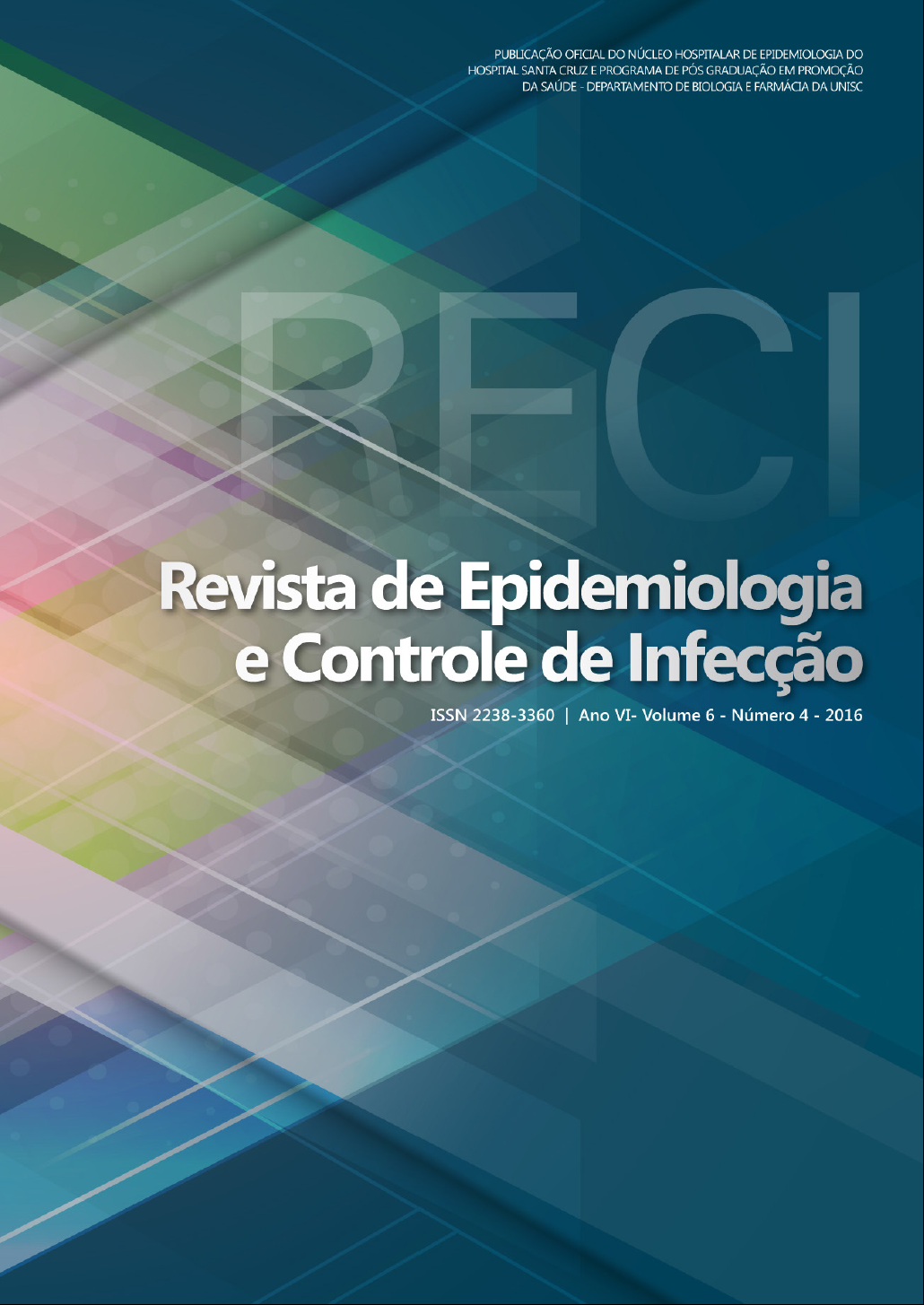Genotypic analysis of Helicobacter pylori by Multiple-Locus Variable-Number TandemRepeats method in southern Brazil
DOI:
https://doi.org/10.17058/reci.v6i4.8043Abstract
Background and objectives: Despite its use as a genotyping method for different microorganisms, few studies have reported the use of Multiple-Locus Variable Number of Tandem Repeats Analysis (MLVA) for the analysis of the clonal diversity of Helicobacter pylori. The aim of this study was to determine the genetic variability of H. pylori strains by MLVA in southern Brazil. Methods: 95 H. pylori DNA samples were obtained from the gastric biopsies of H. pylori-positive patients from two cities in southern Brazil and their clonal analysis was evaluated by MLVA method using electrophoresis in agarose gel. For selection of loci to be analyzed in this study, an in silico analysis of 12 loci previously described in the literature was performed. Results: From the in silico analysis, only four loci were viable for the genotypic analysis of these H. pylori strains, resulting in 90 strains distributed in eight different groups and five orphan strains. Conclusion: Despite MLVA method allow make inferences about the genotypic diversity of a population, our results showed that H. pylori genotyping methods should be critically evaluated prior to their use in this region of Brazil.Downloads
Downloads
Published
How to Cite
Issue
Section
License
The author must state that the paper is original (has not been published previously), not infringing any copyright or other ownership right involving third parties. Once the paper is submitted, the Journal reserves the right to make normative changes, such as spelling and grammar, in order to maintain the language standard, but respecting the author’s style. The published papers become ownership of RECI, considering that all the opinions expressed by the authors are their responsibility. Because we are an open access journal, we allow free use of articles in educational and scientific applications provided the source is cited under the Creative Commons CC-BY license.


